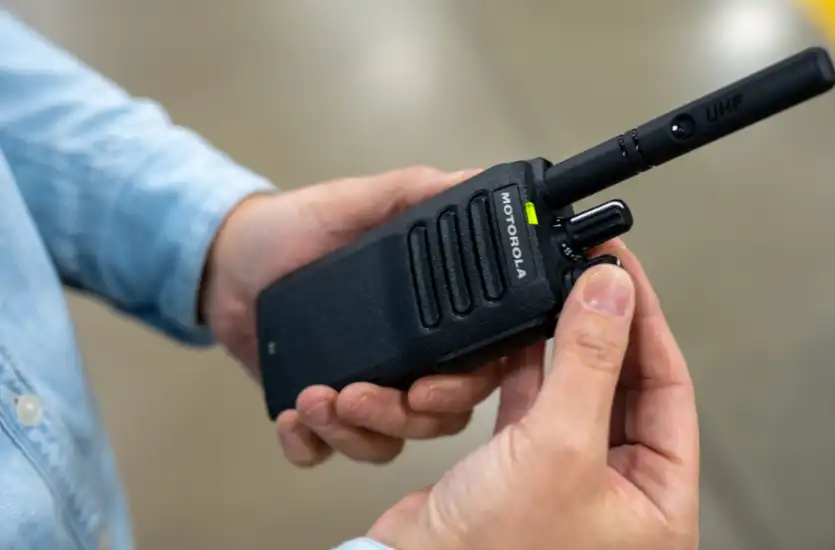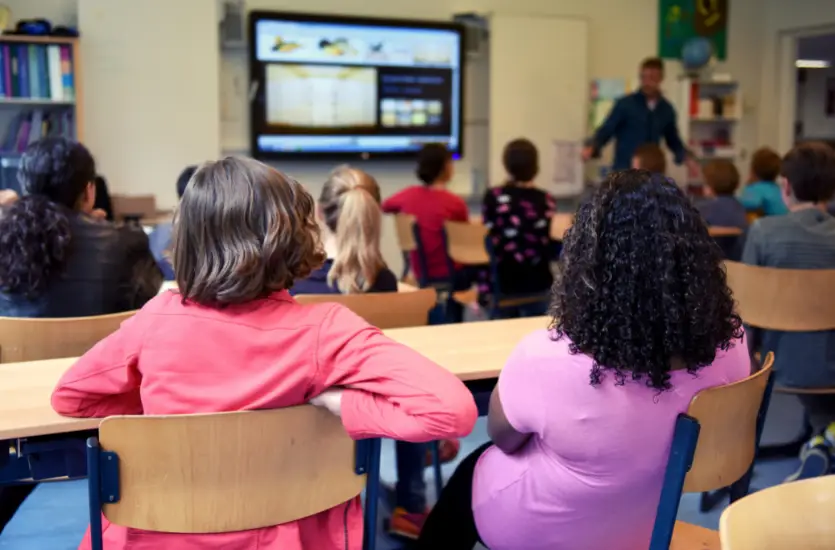When we think of school, we want to picture a safe space. A place where children feel supported, where learning comes naturally, and where communities grow stronger. But in recent decades, that image has started to shift. Headlines about school lockdowns, violence, and threats have made parents, educators, and communities ask tough questions: Are our children truly safe at school? And if something happens, are the right people prepared to respond?
Today’s schools face more than just academic challenges. They must also manage a growing list of safety concerns, from acts of violence and medical emergencies to severe weather and unauthorized access. These aren’t isolated events; they’re part of a wider pattern that’s forced school leaders to reexamine how they protect students and staff daily.
Amongst these growing concerns, one thing becomes clear: communication is everything. In an emergency, delays and confusion can make a dangerous situation worse. Reliable, instant communication is no longer a luxury. It’s a necessity. And as more districts search for better ways to respond, many are taking a hard look at school safety issues and solutions that prioritize speed, clarity, and coordination.
Common School Safety Issues Facing K-12 and Higher Ed Institutions
In 2022, the FBI reported more than 6,000 school threats nationwide, an unsettling 60% increase from the year before. While some data showed a decline in violent incidents from the 2022–2023 to the 2023–2024 school year, that trend shifts dramatically when false reports like swatting are removed. In fact, there was a 49% increase in actual violent incidents during the 2023–2024 school year compared to the previous one.
These statistics paint a troubling picture of the challenges schools continue to face. From K-12 to college campuses, school administrators must now consider not only how to educate students, but also how to keep them safe in a landscape of growing and evolving threats.
Among the most pressing school safety issues are:
- Physical security vulnerabilities: Unlocked or unsecured entry points, broken locks, and outdated surveillance systems leave schools exposed.
- Emergency preparedness gaps: Many schools lack consistency in drills and fail to update emergency response plans regularly, especially as threats evolve.
- Insufficient communication tools for non-teaching staff: While teachers and administrators may have basic communication protocols, support staff such as custodians, cafeteria workers, and substitutes are often left out of the loop.
- Limited coordination with local first responders: Delays in communication can slow response times. One high-profile example is the tragedy at Marjory Stoneman Douglas High School, where communication breakdowns contributed to chaos during a critical window of time.
These issues in schools are not theoretical. They’re real, ongoing, and demand attention. From severe weather events to active threats, time lost in confusion can mean lives at risk. That’s why improving coordination and communication must be at the top of every school’s safety checklist.
The Role of Fast, Reliable Communication in School Safety
In an emergency, seconds matter. Clear and immediate communication is the first line of defense, whether responding to a threat, coordinating an evacuation, or managing a severe weather incident. Yet for many districts, communication remains one of the most overlooked problems in schools.
Cell phones, often considered a default solution, come with major limitations. Spotty coverage, dropped calls, and background noise can disrupt communication, especially in large buildings with basements, boiler rooms, or gymnasiums. Public address systems may not reach outdoor staff or substitute teachers moving between classrooms. And when emergencies strike, mobile networks are often overwhelmed.
That’s why more schools are turning to two-way radios as part of their school safety solutions. Radios offer instant, one-to-many communication that works in real-time, even during power outages or network failures. They’re purpose-built for noisy environments and can be used indoors, outdoors, and even across campuses.
One powerful example is Huntsville City Schools in Alabama. After struggling with poor cellular coverage and safety concerns, the district replaced staff cell phones with MOTOTRBO digital radios. The result? Technicians and emergency responders gained 99% coverage, even in nonexistent cell service. During a real emergency involving a potential gas leak, the school evacuated within minutes thanks to the fast coordination enabled by their two-way radios. The district also reported significant cost savings and more efficient operations across its 40 schools.
Reliable communication doesn’t just improve efficiency in situations where every second counts. It protects lives. Radios eliminate guesswork, reduce delays, and empower schools to act quickly and confidently in the face of the unexpected.
Top School Safety Solutions for Better Emergency Response
When a crisis unfolds on campus, there’s no time for hesitation or confusion. The faster schools can detect, respond, and communicate, the better the chances of preventing harm. As threats continue to evolve, so must the systems we use to respond to them.
The National Association of School Resource Officers (NASRO) emphasizes the importance of layered safety strategies, including threat assessments, bystander reporting, perimeter security, and SRO (School Resource Officer) coordination. But even with the right protocols in place, real-time communication brings these pieces together.
Here are several school safety solutions that strengthen emergency preparedness and improve outcomes:

Implement a Unified Communication System
- Equip all key personnel, such as administrators, front office staff, and SROs, with two-way radios
- Integrate radio communication with local emergency services for immediate external coordination
Provide Radios to All On-Campus Roles
- Extend access to teachers, custodians, cafeteria staff, and bus drivers
- Enable faster internal alerts and improve situational awareness across the school
Conduct Regular Communication Drills
- Test communication tools and protocols through simulated emergencies
- Identify coverage gaps and train staff to respond under pressure
Integrate Radios with Access Control and Alarm Systems
- Link radios with automated systems to trigger lockdown alerts and messages
- Cut down response time and reduce reliance on manual messaging in a crisis
These strategies not only help resolve problems in schools more effectively, but they also make campuses safer and more prepared for anything that comes their way.
Features to Look for in a Two-Way Radio System for Schools
Not all communication tools are created equal, especially when student and staff safety is on the line. Schools need more than just walkie-talkies; they need a reliable, purpose-built system designed to handle the demands of day-to-day operations and critical incidents.
At EMCI Wireless, we help schools identify and deploy scalable radio systems built for education settings. Whether you’re a single-campus elementary school or a sprawling district with multiple facilities, the right technology makes a big difference in how effectively you can respond to emergencies.
When choosing a two-way radio system, look for features that support fast, clear, and secure communication across your entire campus:
- Coverage across large campuses and multi-building schools: Prioritize that your system can reach basements, rooftops, fields, and portable classrooms without signal drop.
- Instant emergency alert buttons: Staff can press a single button to send an urgent alert—ideal in active threat or medical situations.
- GPS tracking and location sharing for mobile staff: Know exactly where your personnel are during an emergency or while performing routine campus checks.
- Encrypted channels to prevent external interference: Protect your communications from being intercepted, prioritizing privacy and safety for sensitive updates.
These features give your team confidence and control in any situation, because when every second counts, your communication tools should work just as hard as you do.
Take the Next Step Toward Safer Campuses
Creating a safer school environment starts with strong, reliable communication. Whether it’s coordinating a lockdown, responding to a weather emergency, or simply staying connected during the school day, clear communication helps reduce confusion and supports faster, more confident decision-making. It’s not just a helpful tool. It’s a key component in addressing ongoing school safety issues and solutions.
As threats grow more complex, school leaders must ask themselves a critical question: Are our current communication systems built to respond in real time? If not, there’s no better time to reassess. The right radio system can help resolve long-standing problems in schools by giving every team member, from administrators to maintenance staff, a direct line to help when they need it most.
At EMCI Wireless, we specialize in helping schools find communication systems that fit their specific needs. We’re proud to be a trusted Motorola channel partner serving schools across southern and central Florida, including areas like Kissimmee, Pensacola, Sebring, and beyond.
If your school or district is ready to take the next step toward better emergency response and daily communication, our team is here to help. Contact EMCI Wireless to schedule a consultation or request a custom safety assessment. Let’s work together to keep your students and staff connected and protected.

